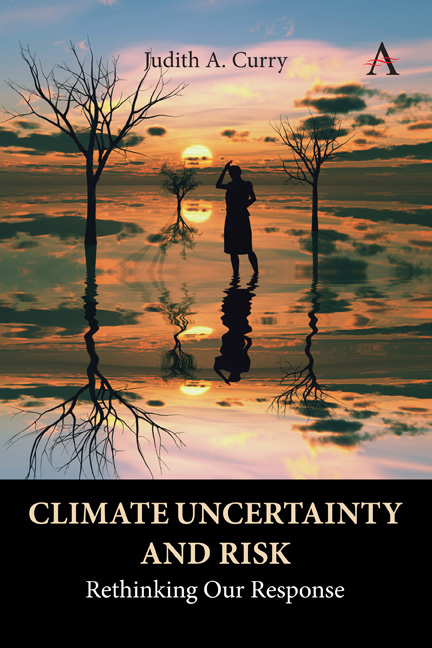Chapter Seven - IPCC Scenarios of Twenty-First Century Climate Change
Published online by Cambridge University Press: 28 February 2024
Summary
“[A]ll of our knowledge is about the past, and all our decisions are about the future.”
—Ian Wilson, author of From Scenario Thinking to Strategic ActionClimate policy discussions are framed by the IPCC Assessment Reports. At the center of the IPCC approach to climate policy analysis are scenarios of the future climate. The IPCC uses global climate models, driven by scenarios of future emissions, as the basis for generating climate futures.
Scenarios refer to “a plausible, comprehensive, integrated and consistent description of how the future might unfold while refraining from a concrete statement on probability.” Scenarios of climate futures play a fundamental role in characterizing societal risks and policy response options.
This chapter examines the IPCC's scenarios of future climate change.
Emissions Scenarios
“There isn’t, you know, like a Mad Max scenario among the SSPs [emissions scenarios], we’re generally in the climate-change field not talking about futures that are worse than today.” (Brian O’Neill, one of the lead architects of the Shared Socioeconomic Pathways developed for the IPCC Sixth Assessment Report)
The IPCC projections of future climate change are driven by changes to radiative forcing arising from changes to concentrations of greenhouse gases and aerosols associated with human activity—primarily from emissions associated with fossil fuels. One approach to generating scenarios is simply to specify different levels of radiative forcing, which are referred to as “pathways.” Another approach is to develop socioeconomic and emission scenarios to provide plausible descriptions of how future emissions and their radiative forcing may evolve. To capture a range of possible future emissions scenarios, energy system modelers use Integrated Assessment Models (IAMs) that simulate both future energy technologies and emissions, and also incorporate assumptions about population, land use, socioeconomic development and policy assumptions.
The most recent set of scenarios used by the IPCC are the Representative Concentration Pathways (RCP) and scenarios developed from the Shared Socioeconomic Pathways (SSP).
The RCPs are a set of four climate scenarios for the end of the twenty-first century. The RCPs were formulated for use in the IPCC Fifth Assessment Report, to reflect different potential climate outcomes (RCP2.6, RCP4.5, RCP6.0, and RCP8.5). The number (e.g., 8.5) reflects the additional radiative forcing (in Watts per square meter, W/m2, which is a measure of energy per unit time and per unit area) in 2100 at the top of the atmosphere from greenhouse gas emissions and other factors, relative to pre-industrial times.
- Type
- Chapter
- Information
- Climate Uncertainty and RiskRethinking Our Response, pp. 81 - 96Publisher: Anthem PressPrint publication year: 2023



